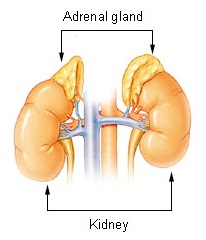
Waterhouse–Friderichsen syndrome (WFS) is defined as adrenal gland failure due to bleeding into the adrenal glands, commonly caused by severe bacterial infection. Typically, it is caused by Neisseria meningitidis.
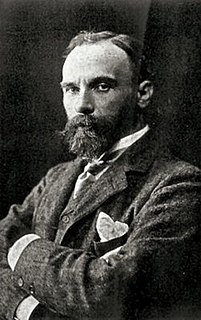
John William Waterhouse was an English painter known for working first in the Academic style and for then embracing the Pre-Raphaelite Brotherhood's style and subject matter. His artworks were known for their depictions of women from both ancient Greek mythology and Arthurian legend.
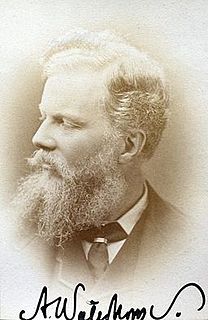
Alfred Waterhouse was an English architect, particularly associated with the Victorian Gothic Revival architecture, although he designed using other architectural styles as well. He is perhaps best known for his designs for Manchester Town Hall and the Natural History Museum in London, although he also built a wide variety of other buildings throughout the country. Besides his most famous public buildings he designed other town halls, the Manchester Assize buildings—bombed in World War II—and the adjacent Strangeways Prison. He also designed several hospitals, the most architecturally interesting being the Royal Infirmary Liverpool and University College Hospital London. He was particularly active in designing buildings for universities, including both Oxford and Cambridge but also what became Liverpool, Manchester and Leeds universities. He designed many country houses, the most important being Eaton Hall in Cheshire, largely demolished in 1961-63. He designed several bank buildings and offices for insurance companies, most notably the Prudential Assurance Company. Although not a major church designer he produced several notable churches and chapels. He was both a member of The Royal Institute of British Architects, of which he served a term as President, and a Royal Academician, acting as Treasurer for the Royal Academy.
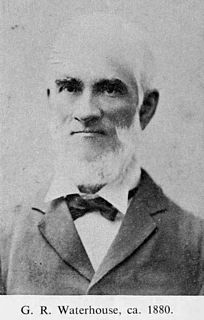
George Robert Waterhouse was an English naturalist. He was a keeper at the department of geology and later curator of the Zoological Society of London's museum.

Waterhouses is a village in County Durham, in England. It is situated to the west of Durham, near Esh Winning, on the northern Bank of the River Deerness.

George Marsden Waterhouse was a Premier of South Australia from 8 October 1861 until 3 July 1863 and the seventh Premier of New Zealand from 11 October 1872 to 3 March 1873.
Brandon and Byshottles is a civil parish and electoral ward in County Durham, England. According to the 2001 census it had a population of 17,774 increasing to 18,509 at the 2011 Census. The parish includes Brandon, New Brancepeth, Broompark, Langley Moor, Ushaw Moor, Meadowfield, Waterhouses and Esh Winning.
Clive Waterhouse is a former Australian rules footballer. He played in the Australian Football League (AFL) for the Fremantle Football Club as a half-forward flanker.

The Waterhouse Football Club is a football team based in Kingston, that competes in the Jamaica National Premier League.
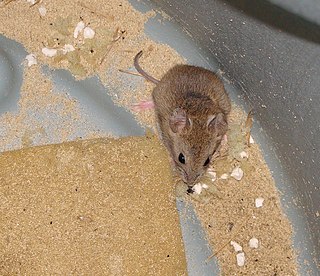
Vesper mice are rodents belonging to a genus Calomys. They are widely distributed in South America. Some species are notable as the vectors of Argentinian hemorrhagic fever and Bolivian hemorrhagic fever.

The Magic Circle is the name of two 1886 oil paintings in the Pre-Raphaelite style by John William Waterhouse. The paintings depict a witch or sorceress using a wand to draw a fiery magic circle on the earth to create a ritual space for her ceremonial magic.
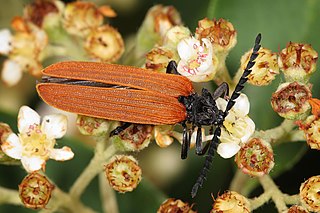
The Lycidae are a family in the beetle order Coleoptera, members of which are commonly called net-winged beetles. These beetles are cosmopolitan, being found in Nearctic, Palearctic, Neotropical, Afrotropical, Oriental, and Australian ecoregions.

Candalides is a large genus of butterflies in the family Lycaenidae. The species of this genus are found in the Australasian realm.
William Waterhouse was a distinguished English bassoonist and musicologist. He played with notable orchestras, was a member of the Melos Ensemble, professor at the Royal Northern College of Music, author of the Yehudi Menuhin Music Guide "Bassoon", of The New Langwill Index, and contributor to the New Grove Dictionary of Music and Musicians.
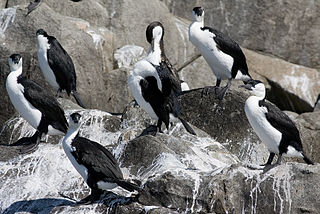
The Little Waterhouse Island, part of the Waterhouse Island Group, is a 2.5-hectare (6.2-acre) granite island situated in Banks Strait, part of Bass Strait, lying close to the north-eastern coast of Tasmania, Australia.

Graham Waterhouse is an English composer and cellist, focused on chamber music. For his own instrument, he composed a cello concerto, Three Pieces for Solo Cello and Variations for Cello Solo. He has written string quartets and compositions which juxtapose a quartet with a solo instrument, including Piccolo Quintet, Bassoon Quintet and Rhapsodie Macabre. He has set poetry for speaking voice and cello, such as Der Handschuh, and has written song cycles. His compositions reflect the individual capacity and character of players and instruments, from piccolo to contrabassoon.

NGC 371, also called Hodge 53, is an open cluster 200,000 light-years away located in the Small Magellanic Cloud in Tucana constellation.

Thomas Robert Waterhouse is an Australian businessman, director of TomWaterhouse.com, co-founder of investment firm ListedReserve.com and CIO of WaterhouseVC.com. He is the fourth generation of the Waterhouse racing dynasty and the grandson of one of the first official bookmakers in Australia.

Alice Suki Waterhouse is an English model, actress and singer.
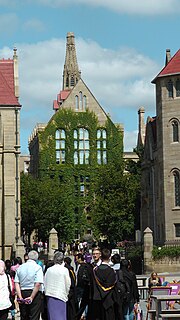
The Beyer building is part of the Old Quadrangle, of the University of Manchester, on Oxford Road, Manchester. The quadrangle comprises the oldest buildings of the University and was completed in 1904, prior to the Owens College becoming the Victoria University of Manchester. The original college building on Oxford Road was built in 1873. The Beyer building was the second side to be completed in 1887. It was funded entirely by Charles Beyer through his will of 1876. Beyer was a well known philanthropist and co-founder of Beyer, Peacock & Company, one of the world's most famous locomotive manufacturers. He was a life governor of Owens college, actively involved in the Owens College Extension Movement, and the single biggest donor to the Extension fund, which in total raised over £100,000 to construct the original building at Oxford Road.

















